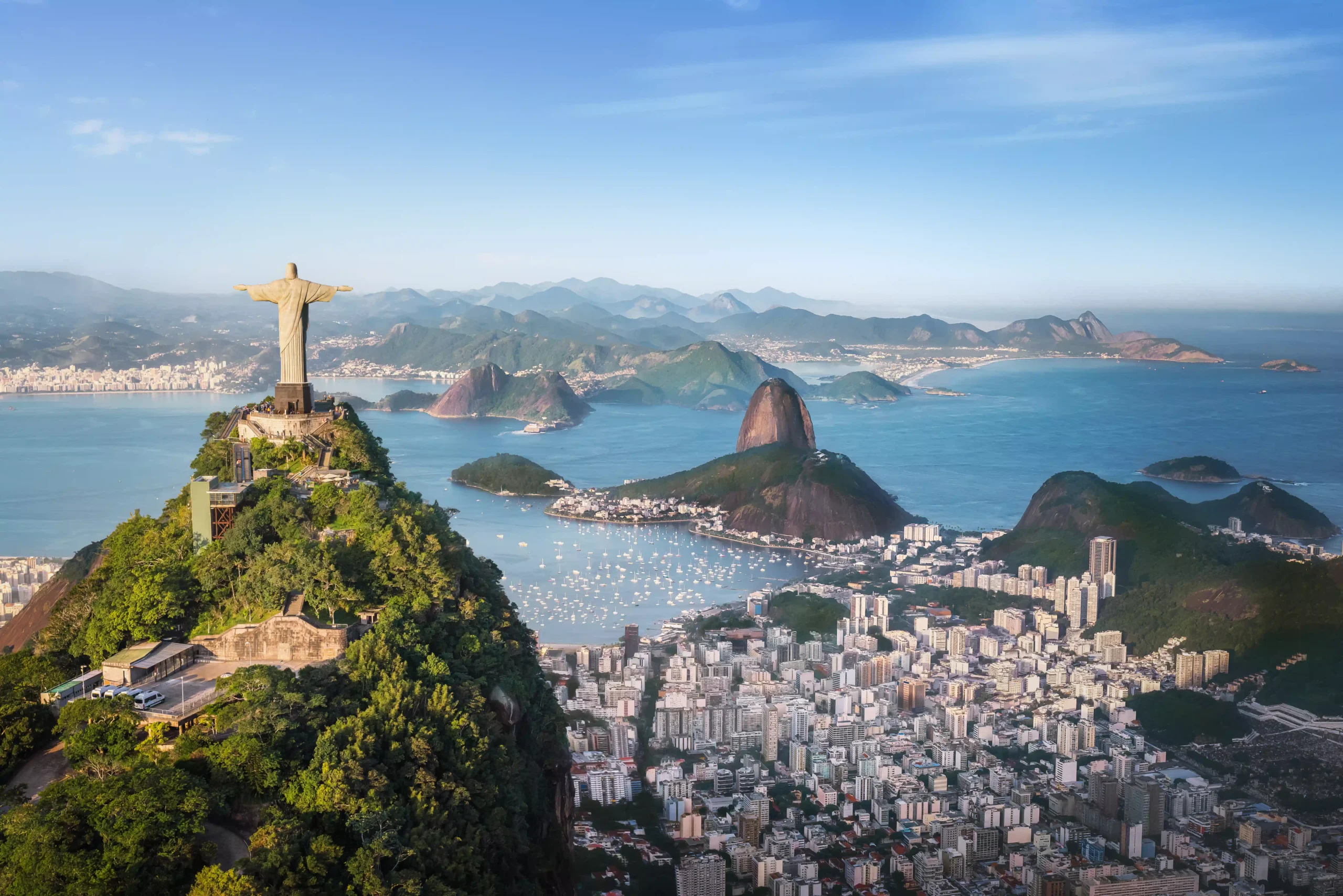
You’ve decided to go to Rio de Janeiro. Congratulations! It is one of the world’s most thrilling cities. But before booking flights and hotels, you face a vital question: what is the best time to visit Rio de Janeiro?
That decision can determine whether you bask in perfect sunshine or battle with rain, tolerate crowds or enjoy calm, pay top dollar or find great deals. In this updated 2025 guide, I will walk you through each season, highlight the risks and rewards, point out when it might be wiser to avoid certain periods, and show how to plan smartly.
This is your go-to resource for choosing the ideal window to experience Rio, with depth, context, and practical insight, not just surface-level tips.
What’s the weather like in Rio de Janeiro?
Rio de Janeiro sits in a tropical zone, meaning heat and humidity are constants, but rainfall and temperature extremes vary throughout the year. According to climate records (1991–2020), the hottest months reach average highs around 29 to 30 °C (84 to 86 °F), while the coolest months remain comfortably warm at about 22 to 24 °C (72 to 75 °F).
Rainfall is concentrated in December, January, and March, which are among the wettest months and often bring frequent storms. The driest stretch runs roughly from May through August, when average precipitation drops significantly.
In 2025, Rio experienced an extreme heat event. In mid-February, temperatures soared to 44 °C (111 °F), the highest in at least a decade, prompting authorities to issue heat alerts and open hydration stations across the city.
Climate-wise, the city follows predictable tropical patterns, but extremes like that heat wave remind travelers that flexibility and caution are essential when planning a trip.
When is the ideal time to travel to Rio de Janeiro?
Embarking on a journey to Rio de Janeiro is very exciting, and choosing the ideal time to visit is crucial. Whether you’re drawn to the pulsating energy of Carnival or seeking the tranquil charm of quieter months, we’ve got you covered. Let’s delve into the details and uncover the perfect time for your Rio adventure!
Summer (December to March)
Summer is Rio at full throttle. The city pulses with festivals, beach life, music on every corner. Carnival energy is building, and New Year’s fireworks light up the bay. In 2025, Carnival officially runs February 28 to March 8, though street parties and “Carnival blocos” stretch before and after.
Weather and challenges
- Heat and humidity often feel intense.
- Frequent afternoon or evening thunderstorms can interrupt plans.
- Crowds are massive, especially in late December, January, and around Carnival dates.
- Hotels, flights, tours, nearly everything costs more and books fast.
- That 2025 heat wave is a reminder: summer can bring record extremes.
Is summer the best time to visit Rio de Janeiro?
If your goal is full-on Rio energy, dancing in samba parades, beach revelry, and nightlife, summer delivers that peak experience. Just accept trade-offs and plan with buffer days and advanced bookings.
Autumn / Early Fall (March to May)
This is where many travelers find Goldilocks conditions. Rainfall begins to subside in April and May, the humidity eases, and the sun returns with more consistency.
You’ll get pleasant days, fewer crowds, and better pricing. It’s a favored window by many travel guides for balancing comfort and experience. One caveat: March can still carry erratic rains leftover from summer, so don’t assume perfect weather right away.
Winter / Dry Season (June to August)
Don’t expect freezing temperatures — Rio’s “winter” remains mild. Daytime highs hover in the mid-20s °C (mid-70s °F), and rainfall is minimal — June is often the driest month.
What travelers enjoy:
- Clear skies and stable weather make outdoor sightseeing dependable.
- Landmarks like Christ the Redeemer and Sugarloaf are less likely obscured by mist or fog.
- Fewer tourists means you can explore neighborhoods, hikes, and beaches at your own pace.
- Sea temperatures drop a bit, so swimming becomes less enticing for some.
- Brazilian school vacations (especially in July) can generate localized crowd surges.
- Some nightlife spots or seasonal services may scale back.
Spring (September to November)
Spring brings a warming trend and growing vibrancy as the city transitions toward summer. Rain begins to creep back, but many days remain good for beach, exploration, and sunshine.
Strengths of spring time:
- A nice compromise between quiet and energy.
- Beaches become more inviting again.
- Accommodation and activity prices remain more manageable than peak summer.
- Many guides cite September–November as among the best periods to visit.
- Late November sees an uptick in rain: readiness for occasional downpours helps.
- As summer approaches, some crowding begins to creep back into popular sites.
How long should I stay in Rio de Janeiro?
The ideal duration for your stay in Rio de Janeiro depends on your preferences and the experiences you wish to indulge in. However, a well-rounded visit to capture the essence of the city usually spans around 5 to 7 days.
This time frame allows you to explore iconic attractions, revel in the vibrant cultural scene, relax on the beaches, and immerse yourself in the city’s atmosphere! Adjust your stay based on personal interests, but a week-long visit provides a balanced and enriching Rio experience.
- Days 1–2: Iconic landmarks: Christ the Redeemer early morning, Sugarloaf at sunset, scenic viewpoints.
- Day 3: Explore neighborhoods: Santa Teresa, Lapa, street art, markets.
- Day 4: Beach day (Copacabana, Ipanema, or Barra), or coastal walk like Arpoador.
- Day 5: Choose a day trip: Petropolis (mountain escape), Paraty (colonial charm), or Ilha Grande (island nature).
- Day 6–7 (optional buffer): Extra day for surprises, rest, or rescheduling due to weather.
These day trips provide a perfect balance, allowing you to experience both the vibrant energy of Rio and the serene beauty of its surrounding areas. If you plan to leave the city for some of those day trips, renting a car can add flexibility and comfort. Use Rentcars to compare options across providers before arrival, it often yields better prices and fewer surprises.
When might it be wise to avoid in Rio de Janeiro?
If your priorities are comfort, reliable beaches, and fewer surprises, then late December through February (especially around Carnival dates) carries the highest risk of discomfort: extreme heat, humidity, storms, crowds, and inflated costs. Also, late November can be tricky: rain picks up, and the city edges toward full summer mode before it fully arrives. In short: avoid mid-summer peak unless your trip is about those festival pressures.
Conclusion
The best time to visit Rio de Janeiro depends on your goals. If festival energy, parties, and beach vibrancy are your draw, summer months and Carnival deliver, but at a steep cost.
If comfort, better value, clearer skies, and relaxed pace appeal more, aim for April through May or September through November. Those windows tend to balance weather, crowds, and budgets more favorably.
Always build in flexibility, carry a light rain jacket, leave room for indoor backups, check forecasts, and plan buffer days. And when renting a car for day trips, comparing offers via Rentcars gives you a strong chance to lock in a good deal and travel smoother.








Leave a Reply